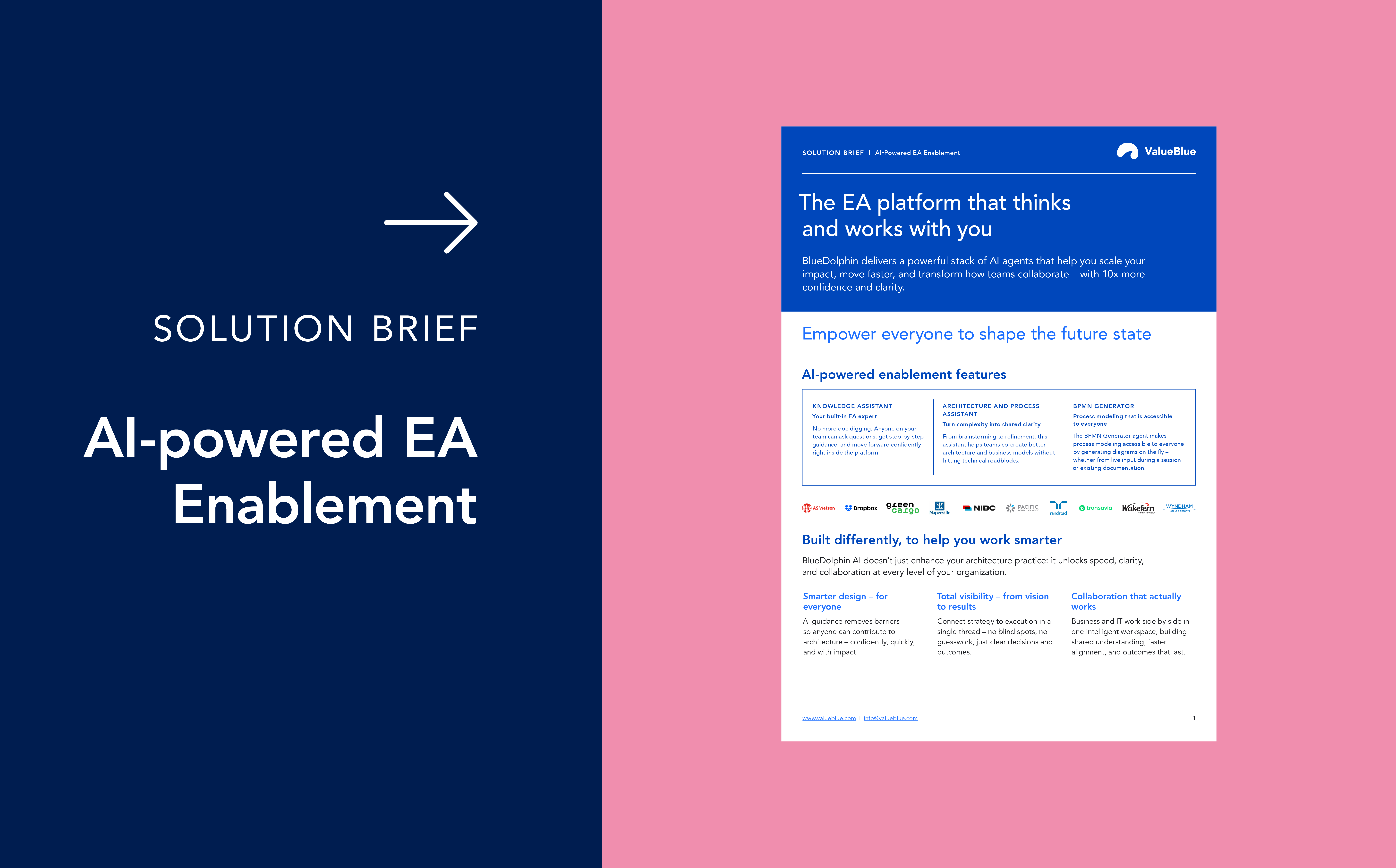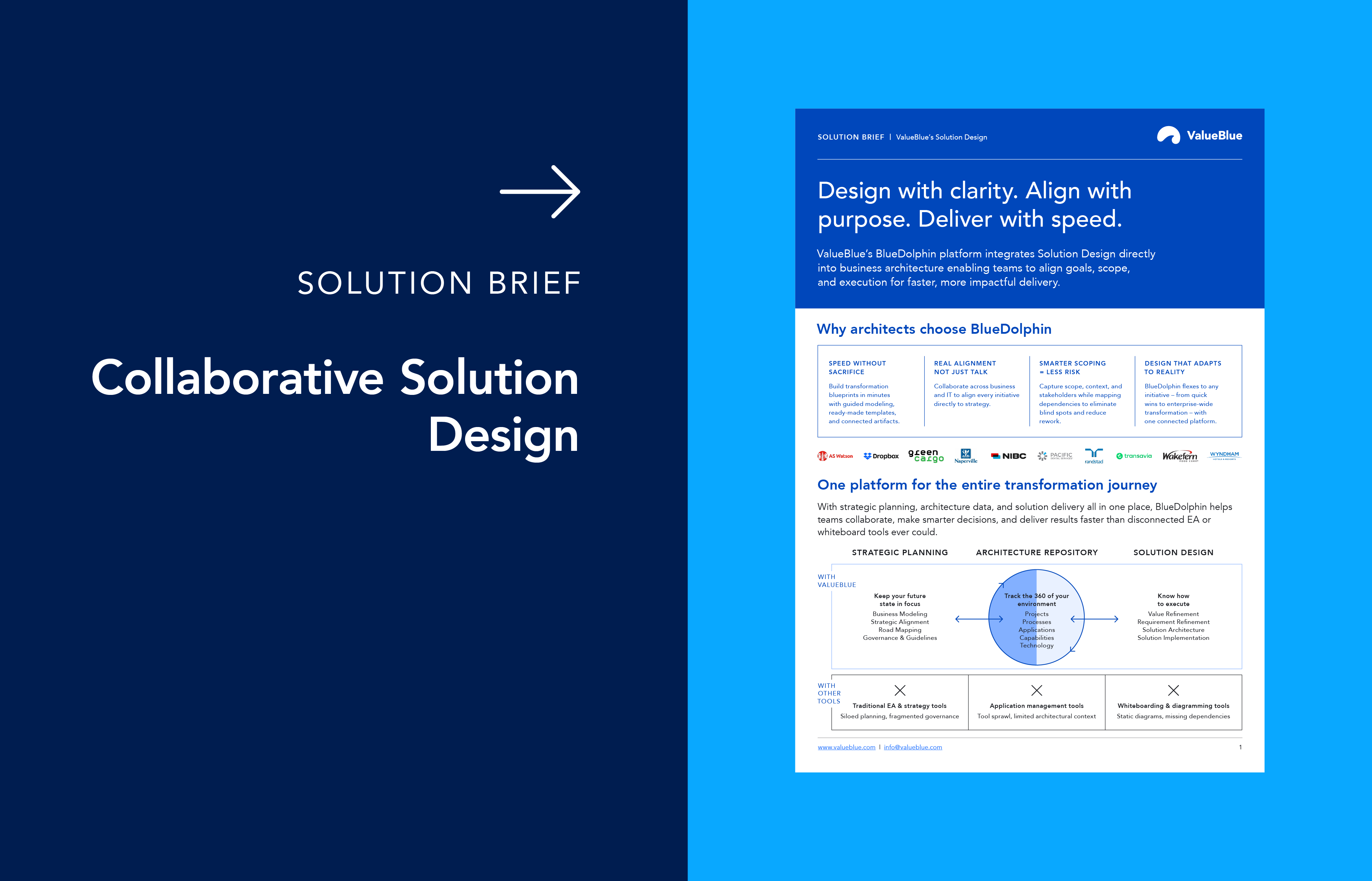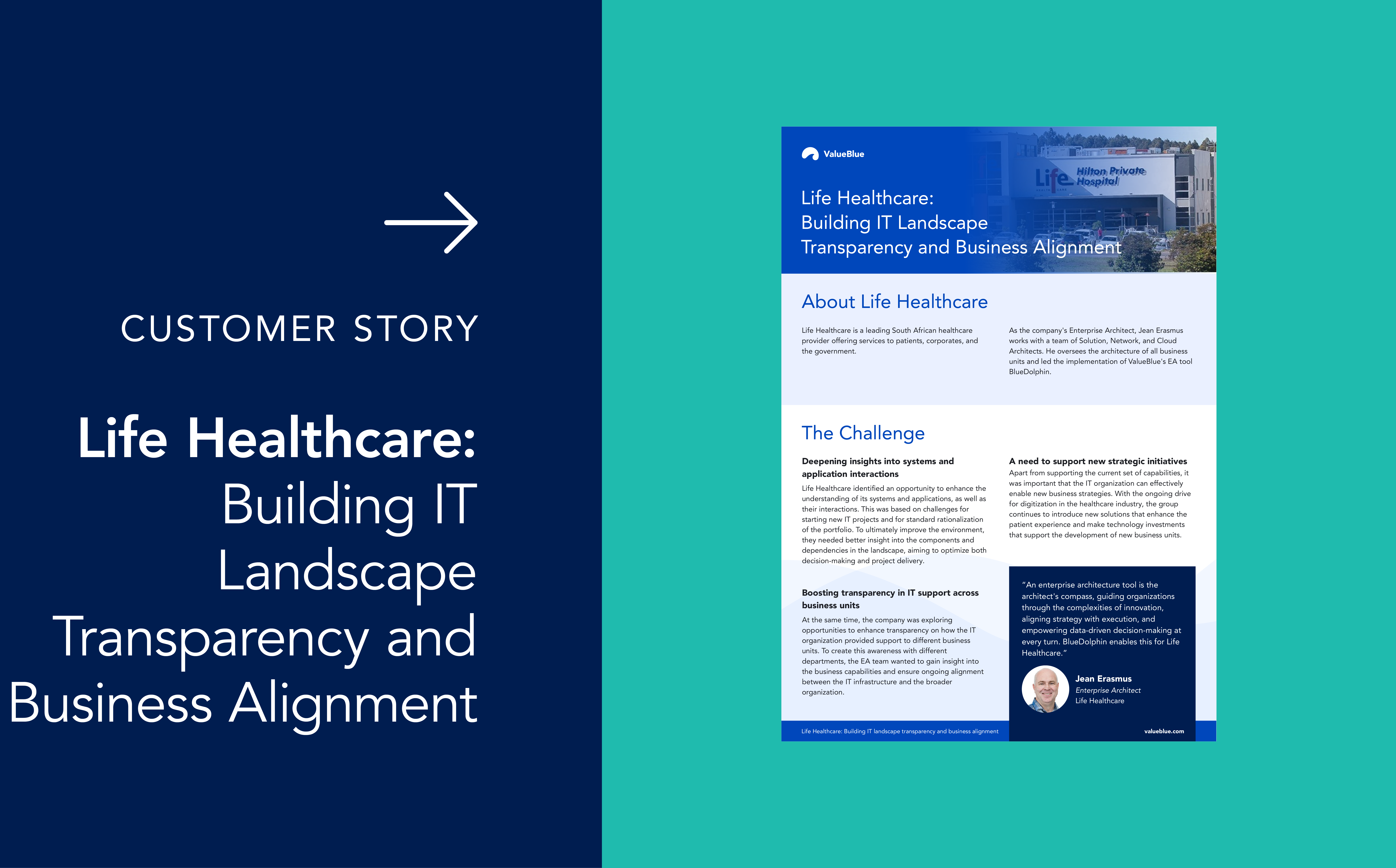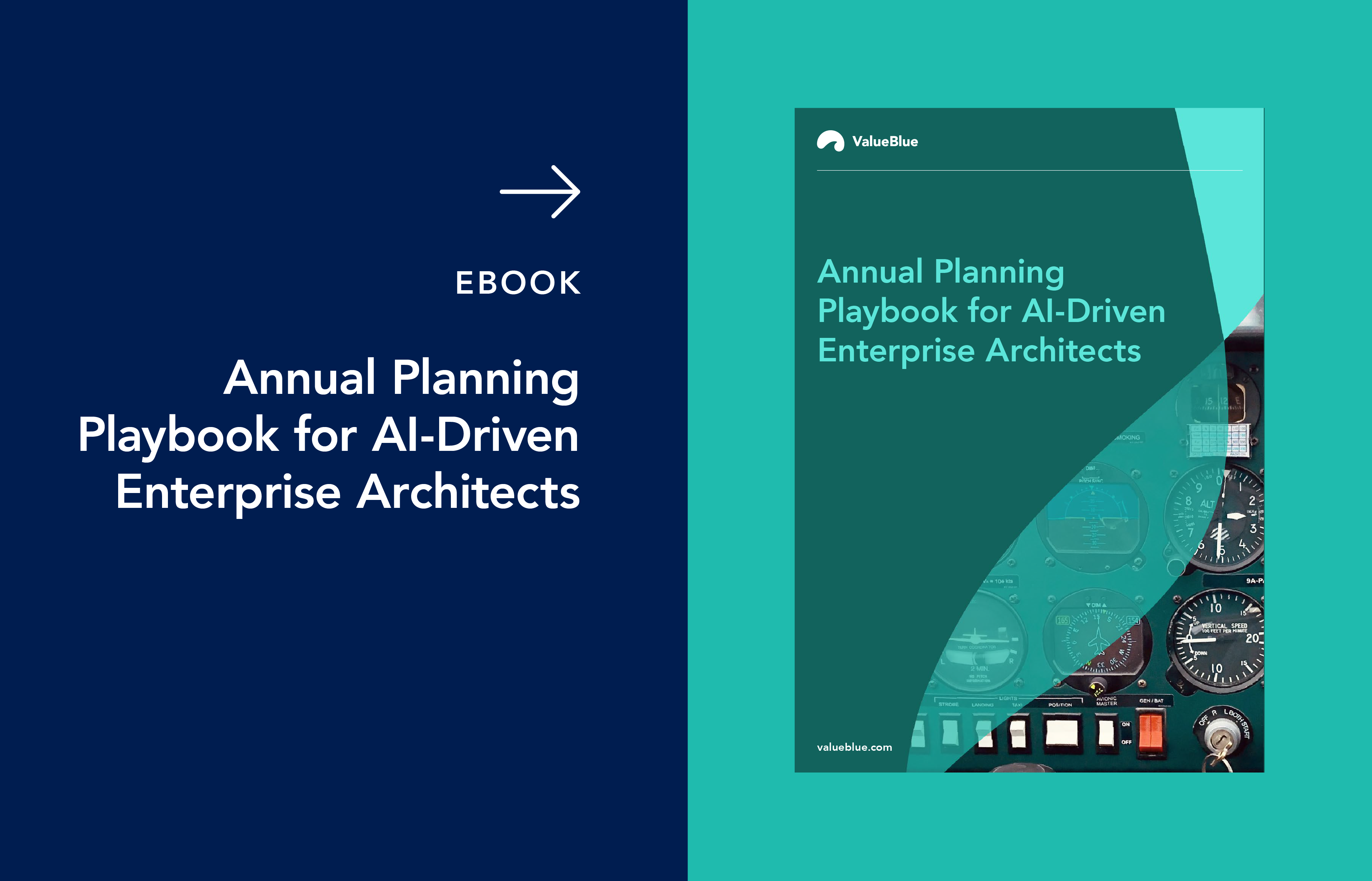8 Ways AI Is Transforming Enterprise Architecture
Enterprise Architecture (EA) is changing fast, and if you’re responsible for shaping your organization’s technology strategy, you’ve probably noticed the growing influence of artificial intelligence (AI). Combining Enterprise Architecture with AI isn’t just a technical upgrade – it’s a whole new way to work smarter, adapt quickly, and maximize value from every technology investment. As digital systems get more complex, AI offers enterprise architects innovative ways to design, manage, and improve every part of the business. In this article, you’ll see exactly how AI is bringing new capabilities to EA, how it can help you leap over everyday hurdles, and where it’s driving bigger, strategic benefits. We’ll track each major impact with real-world examples and practical takeaways, making the case for why every EA team should be thinking AI-first.
1. It enables smarter decision-making
The old way of making decisions in architecture depended on the experience of a few experts and manual data crunching. This method was vulnerable to blind spots, over-reliance on intuition, and basic resource limitations.
With AI, those limits vanish. AI algorithms can analyze vast volumes of data from applications, infrastructure, processes, and even changes in external markets. By identifying trends and patterns invisible to the human eye, machine learning can help you spot inefficiencies, predict technology needs, and flag risks long before they escalate. AI-backed predictive analytics highlight which systems need maintenance, which business processes are slowing you down, and where vulnerabilities hide.
AI also lets architects model scenarios before taking action, so you can test multiple pathways and assess the impacts with confidence. The result? Decision-making that’s faster, more grounded, and future-proof, letting your EA team proactively shape the business instead of constantly playing catch-up.
Curious how smarter decision-making drives real-world transformation? Visit How Enterprise Architecture Powers Digital Transformation to learn more.
2. It streamlines modeling and design
Building enterprise models and designing target architectures is core EA work – but in complex organizations, the task can be time-consuming and error-prone. AI addresses this problem by accelerating the creation, analysis, and improvement of diagrams.
Instead of manually mapping out dependencies, redundancies, or possible improvement areas, AI-driven tools can automatically suggest design patterns, identify duplicate systems, and flag risks. Modeling capabilities powered by AI draw on the best practices from thousands of previous projects, offering consistent, repeatable recommendations.
Architects can also simulate changes before making them, with AI estimating the impact of different scenarios in real time. This means less trial and error, more reliability, and much faster action – cutting days or even weeks from the typical design process.
Want to see how smarter design leads to strategic success? Explore Enterprise Architecture: From Business Strategy to Execution.
3. It cuts down on routine work
Architecture isn’t all blueprints and big thinking – it includes plenty of grind. Data must be collected, documented, and checked; reports must be generated; compliance must be tracked. For most teams, these repetitive tasks eat up precious time and energy that could be better spent on strategic work.
AI lessens the burden by automating data collection, organizing information across platforms, and handling documentation without manual input. Compliance can be monitored in real time, flagging potential issues instantly, and reports created at the touch of a button.
When AI handles routine work, architects can focus on effective planning, stakeholder engagement, and driving initiatives forward, boosting efficiency and morale across the team.
4. It brings better data quality and clarity
Great architecture depends on great data. Yet silos, outdated records, and inconsistencies often undermine analysis and decision-making. AI addresses this challenge by continuously cleaning, organizing, and standardizing data from a variety of sources – including documents, emails, and legacy databases.
With AI, conflicting information and missing pieces are flagged for review, and relevant insights are pulled automatically. Machine learning tools sift through data lakes, connecting pieces, and prioritizing what matters.
Improved data quality means enterprise architects (and senior leaders) have up-to-date, trustworthy insights. As a result, mistakes are avoided, business goals are more easily aligned with technology, and strategic decisions are based on solid foundations rather than best guesses.
Want to see how this works in practice? Book a short BlueDolphin demo.
Learn how you can use AI in your transformation initiatives.
5. It allows for stronger strategic planning and scenario analysis
Enterprise architects are always asked to look ahead – planning for growth, avoiding disruption, and supporting business strategy. AI empowers this role with predictive analytics that track technology trends, market behavior, customer preferences, and more.
With scenario modeling capabilities, architects can simulate changes (such as system upgrades or regulatory shifts) and assess their likely impact on the entire enterprise ecosystem. AI can build business roadmaps that adapt to different futures, factoring in potential disruptions such as supply chain changes or security threats.
By forecasting what’s coming, you can prepare, invest wisely, and pivot nimbly when reality shifts – keeping your organization a step ahead of competitors in fast-moving markets.
Discover more about strategic planning and scenario modeling at The New Rhythm of Annual Planning with Enterprise Architecture.
6. It enables clearer communication and collaboration
Communicating the value of EA across businesses is notoriously difficult – especially with technical language and complex diagrams. AI helps solve this problem by transforming raw data into clear visuals, dashboards, and summary reports that everyone, from engineers to executives, can understand.
With AI-driven presentations and live dashboards, stakeholders across every department have access to up-to-date insights that show the current state, trends, and recommendations. Collaboration improves when teams can work from a shared, visual “source of truth” – aligning faster and making decisions with greater confidence.
This translates directly into better buy-in from leadership and cross-functional teams, making strategic initiatives more successful and transformation efforts easier to execute.
Learn best practices for collaboration at Collaborative Enterprise Architecture as the Answer to Effectiveness.
7. It drives innovation and staying ahead
If you want your EA practice to be a driver of innovation, AI is the catalyst. By revealing hidden opportunities through data analysis, AI helps you uncover unmet customer needs, test ideas quickly, and guide development of new digital products and services.
AI can identify emerging trends, forecast demands, and help scale new offerings with less risk and investment. When architects build in innovative features, processes, or models, AI can simulate adoption, evaluate outcomes, and recommend tweaks before a full rollout.
This proactive approach means organizations using AI in EA don’t just keep up – they lead. The speed and flexibility of innovation become competitive advantages, allowing for more experimentation and rapid scaling of successful ideas.
8. It helps in managing risk and compliance
EA teams are responsible for staying compliant and reducing risk, particularly in regulated industries. AI elevates risk management with real-time monitoring, predictive analytics, and automated compliance checks.
AI scans your systems for alignment with standards, regulations, and internal policies, sending alerts for violations and helping teams respond before a crisis arises. Predictive risk analytics anticipate emerging threats, from cybersecurity vulnerabilities to operational bottlenecks.
When compliance and risk management are automated and data-driven, trust with customers and regulators goes up, and the cost of non-compliance goes down.
Tackling the challenges
AI’s promise in EA is clear, but implementation isn’t without hurdles. Legacy systems may resist integration with new platforms, and robust data privacy is a must. The skills gap between traditional EA and AI adoption can slow progress, while ethical considerations and transparency must be front and center.
Organizations tackling these challenges invest in staff training, update governance policies, and partner with technology providers who prioritize trust and transparency. Building a culture of continuous learning and openness will help realize AI’s full potential in Enterprise Architecture.
To learn more, read Solving 7 Common Enterprise Architecture Challenges.
Key takeaways
- AI is fundamentally changing Enterprise Architecture by enhancing decision-making, optimizing modeling and design, and continuously improving data quality across the organization.
- Automation of routine EA tasks enables architects to focus on high-value strategy, stakeholder engagement, and innovation rather than manual data work.
- Predictive analytics, scenario modeling, and automated compliance allow for smarter, faster strategic planning and risk management.
- Clearer communication and collaboration tools powered by AI help align stakeholders and secure executive buy-in, making transformation initiatives more effective.
- Embracing AI in EA accelerates innovation, uncovers hidden opportunities for new products or services, and ensures your business keeps ahead of changing technologies and markets.
- While challenges such as legacy systems, data security, and skills gaps remain, organizations that invest in the right technology, knowledge, and governance are positioned to gain a true competitive edge.
- The future of Enterprise Architecture isn’t just about managing systems – it’s about blending human creativity with smart automation. Businesses that harness AI today are building the flexible, resilient architectures of tomorrow.
Looking ahead: People and AI working together
As AI cuts down routine work, enhances data, and powers smarter decisions, the architect’s role shifts toward creativity, strategy, and leadership. Technology supports business ambitions more effectively, and organizations can innovate and adapt no matter what the future holds.
Organizations that embrace AI within EA today won’t just be prepared – they’ll be ahead, ready for new opportunities and resilience in the face of uncertainty.
As AI continues to improve, organizations that welcome it into their Enterprise Architecture will be better prepared for whatever comes next. Want to make the first step? Contact us for a free demo today!
Book a demo
Want to discover how our tool can further enhance your Enterprise Architecture? Fill in the form!
Not ready for a demo yet?
Let’s discuss how BlueDolphin fits your organization’s needs.





